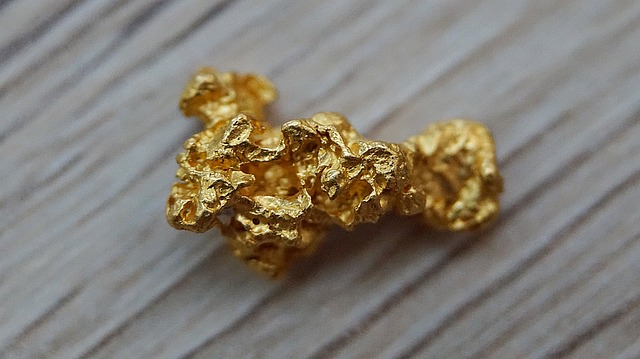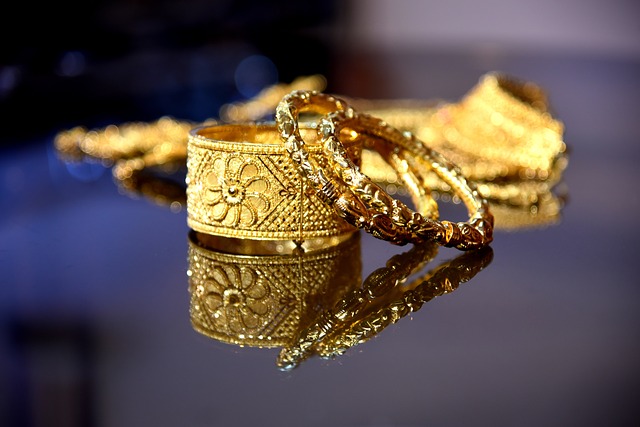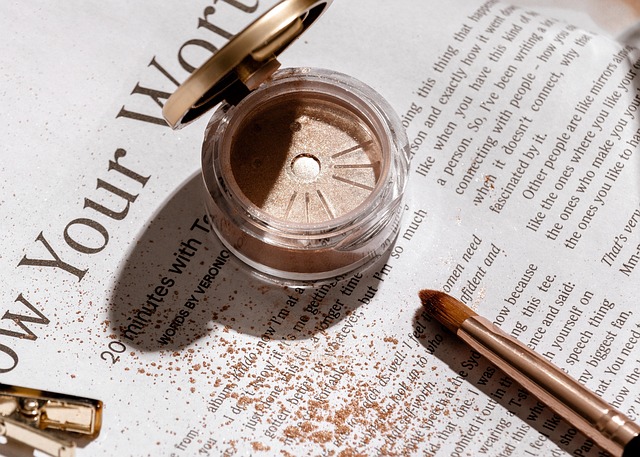To invest in physical gold through a Roth IRA, one must first set up a self-directed Roth IRA with a custodian experienced in managing alternative assets like precious metals. The chosen custodian must ensure that the gold meets the IRS's 99.5% purity for bullion and 99.92% for coins standards. You can transfer funds from an existing Roth IRA to this new account through a trustee-to-trustee transfer or direct rollover, adhering to IRS regulations to avoid tax penalties. Once the funds are transferred, you can purchase IRS-approved gold from a reputable dealer who follows industry and IRS guidelines. The gold must then be stored in an IRS-compliant depository with strong security measures and insurance coverage. This investment strategy allows for tax-free growth and provides a hedge against inflation and market volatility, while still maintaining the benefits of a Roth IRA. It's essential to work with professionals and stay informed about tax implications throughout this process.
Exploring the transformation of a Roth IRA into a diversified investment portfolio featuring physical gold presents a strategic financial move. This article demystifies the process, from establishing a self-directed Roth IRA conducive to precious metals to navigating the specifics of transferring existing funds. Delve into the regulatory landscape and tax implications that accompany this shift, ensuring you select a reputable gold dealer and consider secure storage solutions. Whether considering the benefits of gold as an inflation hedge or its historical role in wealth preservation, learn how to integrate this tangible asset into your retirement savings with confidence.
- Setting Up a Self-Directed Roth IRA for Precious Metals
- Qualified Gold for Roth IRA Investments
- Steps to Transfer Existing Roth IRA to a Gold Investment
- Regulatory Compliance and Tax Considerations
- Selecting a Trustworthy Gold Dealer and Storage Solutions
Setting Up a Self-Directed Roth IRA for Precious Metals

To initiate the process of converting a traditional Roth IRA to one that holds physical gold and other precious metals, individuals must first establish a self-directed Roth IRA. This account is specifically designed to accommodate a diverse range of investments, including real estate, precious metals, and private business interests, beyond the conventional stocks and bonds. The setup process begins with selecting a custodian that specializes in self-directed IRAs and is experienced in handling alternative assets like gold. It’s crucial to conduct thorough research to find a reputable custodian, as they will be responsible for maintaining the IRS compliance of your investments. Once you have chosen a custodian, you can fund your new self-directed Roth IRA by rolling over funds from an existing Roth IRA or another eligible retirement account without triggering any taxable event. After funding, you gain the freedom to invest in IRS-approved precious metals according to specific purity standards. These investments must be held in an IRS-compliant depository for safekeeping, ensuring that your gold holdings remain within the confines of your retirement account and preserve the tax advantages of your Roth IRA.
Qualified Gold for Roth IRA Investments

When considering an investment in gold within a Roth IRA, it is imperative to focus on acquiring qualified gold for this purpose. The Internal Revenue Service (IRS) has stringent rules regarding what constitutes permissible assets within a self-directed Roth IRA. To ensure compliance, the gold must meet specific fineness requirements and be held in an IRS-approved depository or acquired through a reputable custodian specializing in precious metals IRAs. The gold must be of .995 fine for bullion coins or bars and .9992 fine for rare collectible coins to be classified as qualified gold. This distinction is crucial, as only investments in qualified gold can provide tax-free growth potential within a Roth IRA framework.
Investors looking to include physical gold in their Roth IRA portfolio should work closely with experienced custodians who understand the nuances of these types of investments. These custodians will facilitate the purchase and safekeeping of the gold, ensuring that it adheres to the IRS’s purity standards. They will also manage the logistics of transferring the gold into an IRS-approved storage facility if needed. By adhering to these regulations and investing in qualified gold, Roth IRA holders can diversify their portfolios with a tangible asset that has historically offered a hedge against inflation and market volatility, all while leveraging the tax advantages associated with a Roth IRA.
Steps to Transfer Existing Roth IRA to a Gold Investment

Once you have set up a self-directed Roth IRA that permits investment in physical gold and other precious metals, the next step is to initiate a transfer from your existing Roth IRA. This process, known as a “transfer,” as opposed to a “rollover,” ensures that there are no tax implications as long as you adhere to IRS regulations. You have two main options for this transfer: a trustee-to-trustee transfer or a direct rollover. In a trustee-to-trustee transfer, your current Roth IRA custodian directly sends assets to the new custodian overseeing your self-directed Roth IRA that will hold gold. This method is straightforward and typically involves minimal paperwork.
For a direct rollover, you would receive a check made payable to your new IRA custodian, which you then forward to the new custodian without depositing it into your personal account. This step is crucial to avoid triggering taxes and early distribution penalties. Once the transfer is complete, you can work with a trusted precious metals dealer who is approved by your IRA custodian to purchase gold coins or bullion that meet the IRS’s purity standards for retirement accounts. Ensure that all transactions are conducted in accordance with IRS rules to maintain the tax-advantaged status of your Roth IRA. After the transfer and acquisition of the gold, your self-directed Roth IRA will hold a diversified investment that includes physical gold, offering you an alternative to traditional financial instruments.
Regulatory Compliance and Tax Considerations

When considering the conversion of a Roth IRA to gold, regulatory compliance is paramount. The Internal Revenue Service (IRS) mandates that any investment within an IRA must be held by a trustee or custodian who is approved by the IRS. As such, investors must establish a self-directed Roth IRA with a custodian that specializes in alternative assets like precious metals. This custodian will ensure that the gold investments adhere to the IRS rules and standards. Moreover, the physical gold must meet the purity requirements set forth by the IRS; typically, gold coins or bars must be 99.9% pure or better to qualify for IRA investment.
Tax considerations are also critical in this process. Roth IRAs offer tax-free growth and withdrawals under current law, assuming certain conditions are met. When converting a traditional IRA to a Roth IRA, including one that will be invested in gold, the conversion is generally treated as a taxable event. The amount rolled over from the traditional IRA to the Roth IRA is subject to income taxes in the year of the conversion. However, once in the Roth IRA, the growth and appreciation of the gold investment are not subject to federal income taxes so long as the Roth IRA distribution rules are followed after reaching the age of 59½ or under qualifying conditions. It’s important to consult with a tax professional to navigate the tax implications associated with this type of conversion and to ensure compliance with all applicable tax laws.
Selecting a Trustworthy Gold Dealer and Storage Solutions

When considering the conversion of your Roth IRA to gold, selecting a trustworthy gold dealer is paramount. This decision hinges on the dealer’s reputation, transparency in pricing, and compliance with regulatory standards. Reputable dealers typically belong to industry organizations like the Industry Council for Tangible Assets (ICTA) or the Professional Coin Grading Service (PCGS). They should provide detailed invoices reflecting the precise weight, purity, and cost of the gold products, ensuring no hidden fees undermine your investment. Additionally, they must adhere to Internal Revenue Service (IRS) guidelines for IRA-approved precious metals.
In tandem with sourcing gold from a reliable dealer, securing appropriate storage solutions is equally important. Storage options vary, from domestic safe deposit boxes to specialized depositories approved by the IRS for holding IRA-invested precious metals. These facilities prioritize security and insurance coverage to safeguard your investment. When opting for a safe deposit box, ensure it complies with IRS regulations for IRA assets. For a more hands-off approach, consider using an IRS-approved depository, which often comes with the added benefit of professional management and regular audits for peace of mind. Both methods aim to protect your gold investment from theft, loss, or damage, ensuring its value remains preserved as part of your retirement portfolio.
In conclusion, transitioning a Roth IRA into a gold investment is a process that can be navigated with careful planning and the right guidance. By setting up a self-directed Roth IRA that accommodates precious metals, investors gain the opportunity to diversify their retirement portfolio in a tax-advantaged manner. It is imperative to ensure that the selected gold adheres to the guidelines set forth for Roth IRA investments, to understand the regulatory and tax implications, and to engage with reputable dealers and secure storage solutions. With these steps in place, investors can strategically incorporate physical gold into their retirement strategy, potentially enhancing their financial security and stability.
